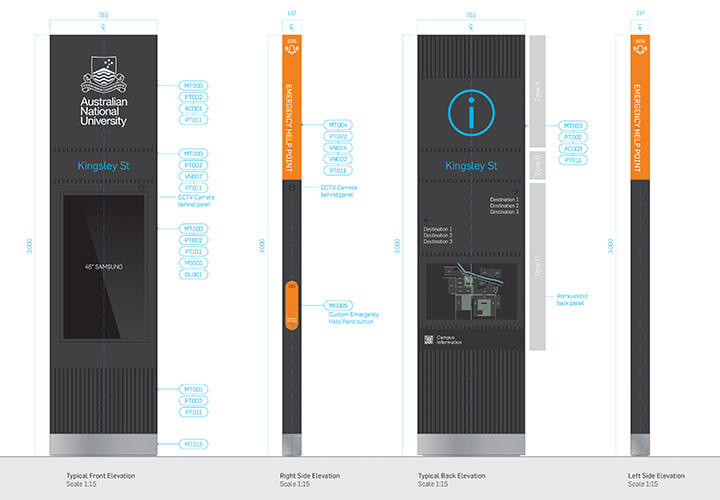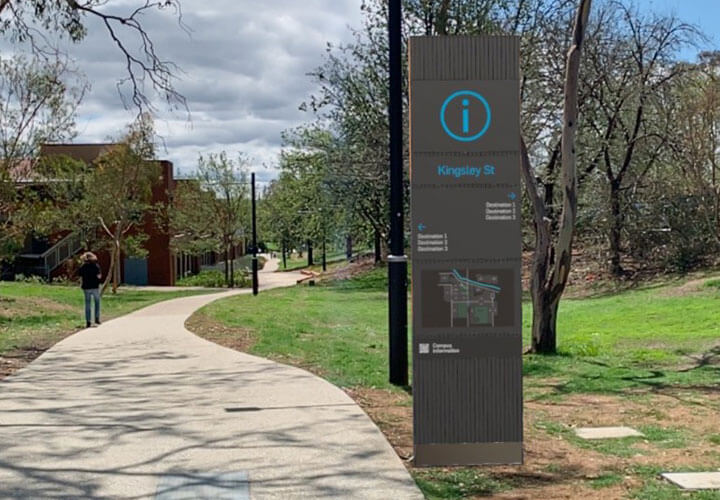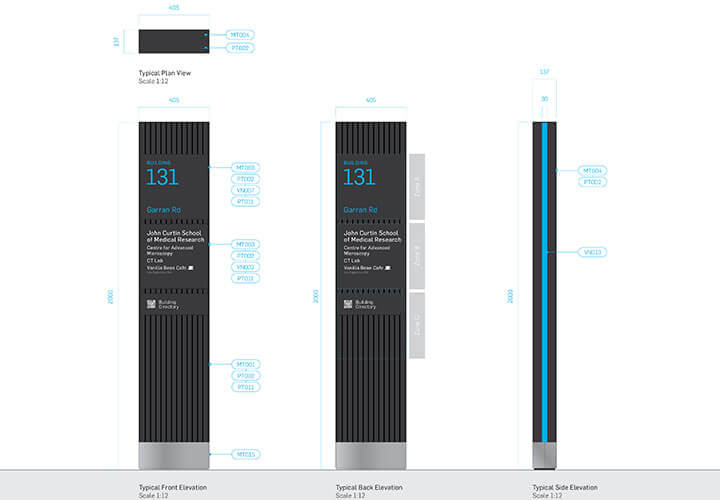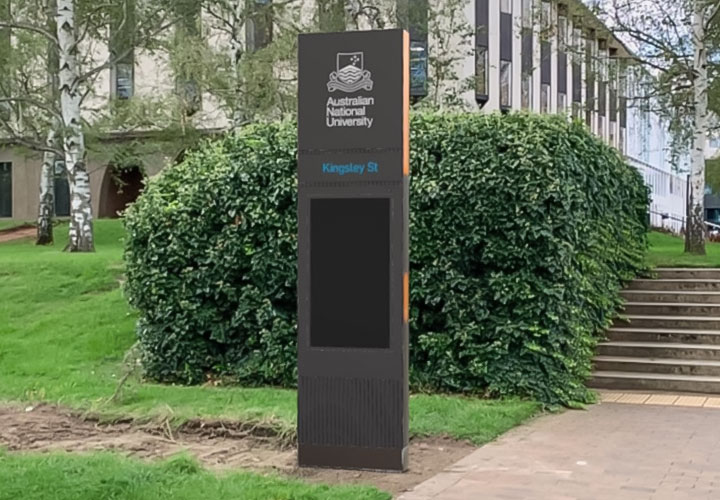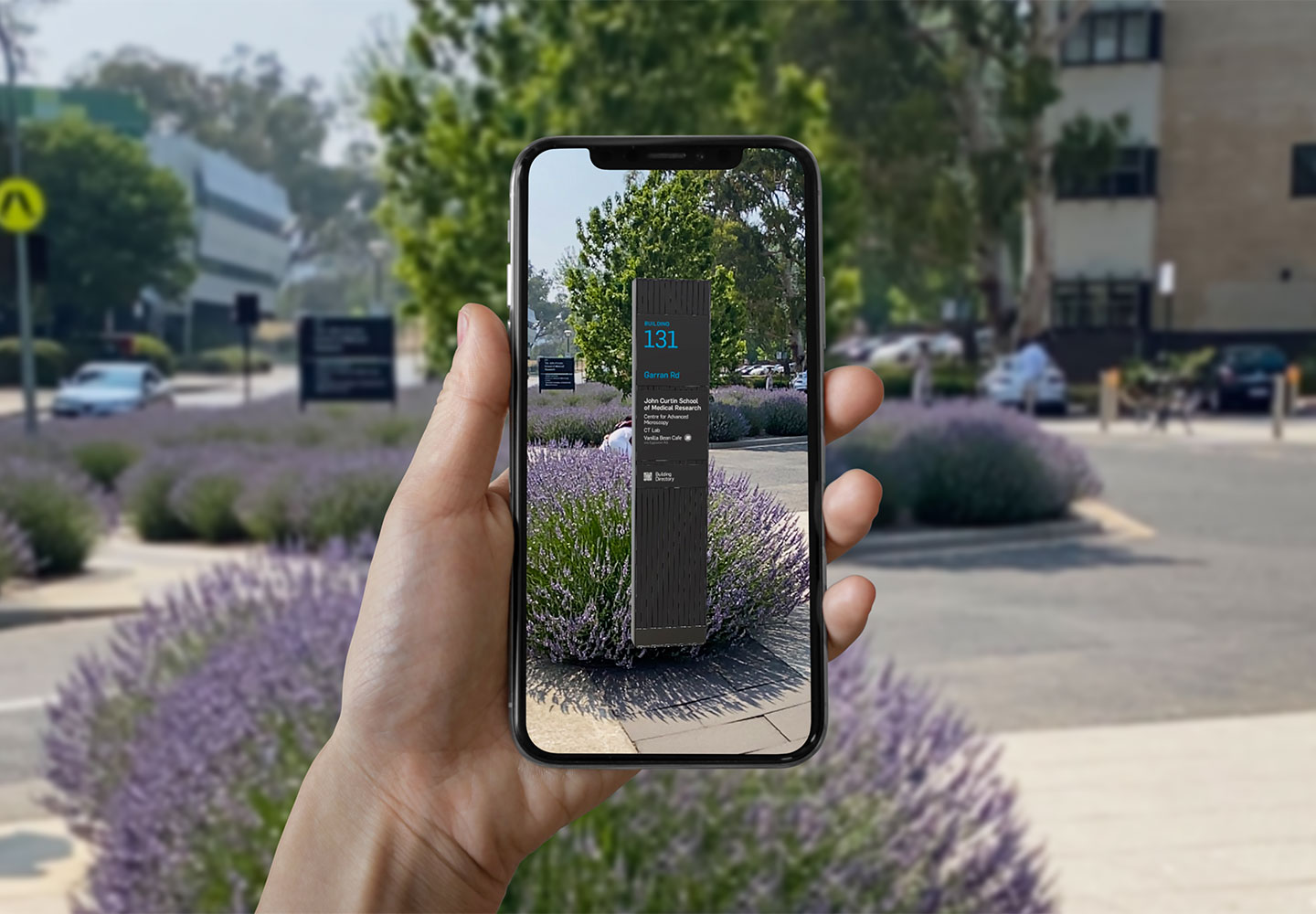BrandCulture is using Augmented Reality to help clients ‘see’ our designs in context before they are implemented.
When it comes to interpreting maps and technical drawings, some people are more visually literate than others.
Of course, in our field of design, a degree of visual literacy is really important when it comes to interpreting master plans and signage manuals. For clients staring at a floorplan cluttered with icons, it can sometimes be difficult to understand how one sign type or sign location compares with another.
To take the guesswork out of the wayfinding design and implementation process, our studio is now using Augmented Reality (AR) to help clients to ‘see’ our designs in context. It’s a “game-changer”, according to our Design Director Nick Bannikoff. Instead of signing off on designs without fully understanding their environmental context, our clients can now review our designs in a style that fits their needs.
When designing a campus-wide wayfinding strategy for the Australian National University (ANU), for example, we used AR to test the location of hundreds of signs.
Not too tall, not too short, but just right
With AR, a tablet becomes a window to your world. You can review different sign locations; compare directional signs versus kiosks versus totems; or test various heights, materials and shapes before committing to a towering mega-sign, for example.
Zoom out, and you’ll see how a sign looks from across the street. If the text is too small to be read from a distance, simply tweak the design before signing off on it. If you need to feature branding and sponsor logos in your environment, but don’t want to detract from the architecture, visualizing designs in context is invaluable.
Augmented Reality gives our clients confidence in their decisions. The alternative – removing, re-designing and re-installing designs – can be prohibitively expensive and wasteful.
This technology is already widely available in Australia. So, reach out to your local AR company and ask if they can help you to visualize your design concepts. We’re excited to be embracing innovation that connects us with clients in game-changing ways.
Below: On the left, these technical drawings detail sign types, heights and specifications. On the right, the same signs are shown in a way that’s instantly understandable using Augmented Reality.
If you’d like to find out more about our Augmented Reality design capabilities, send a note to [email protected]
